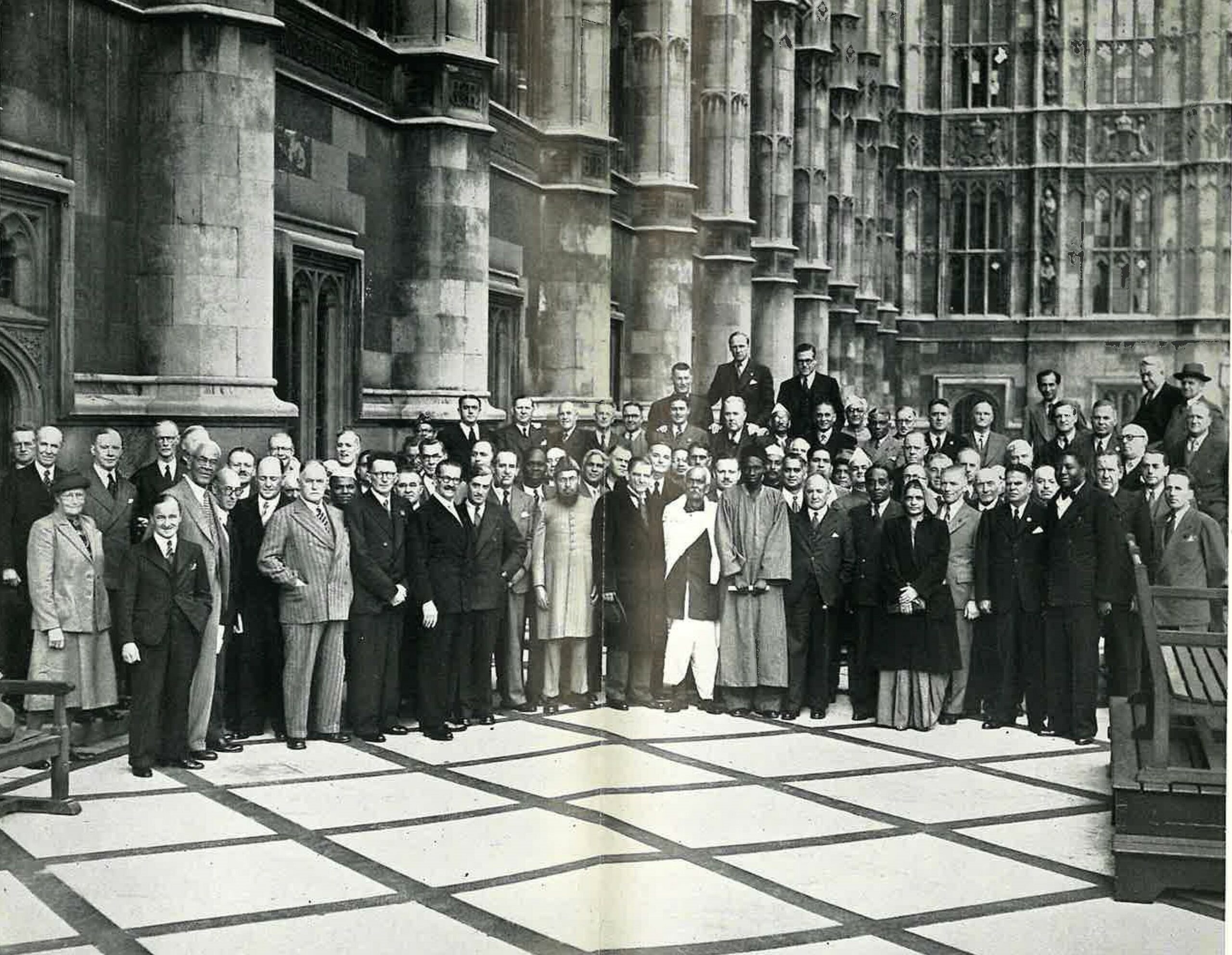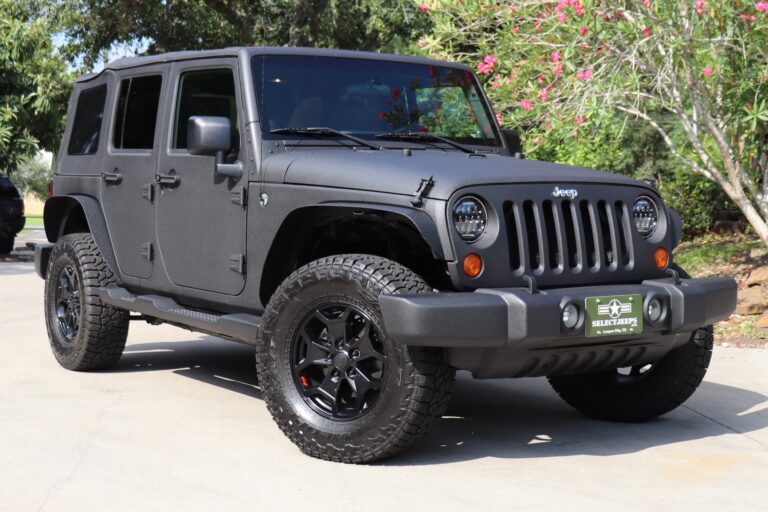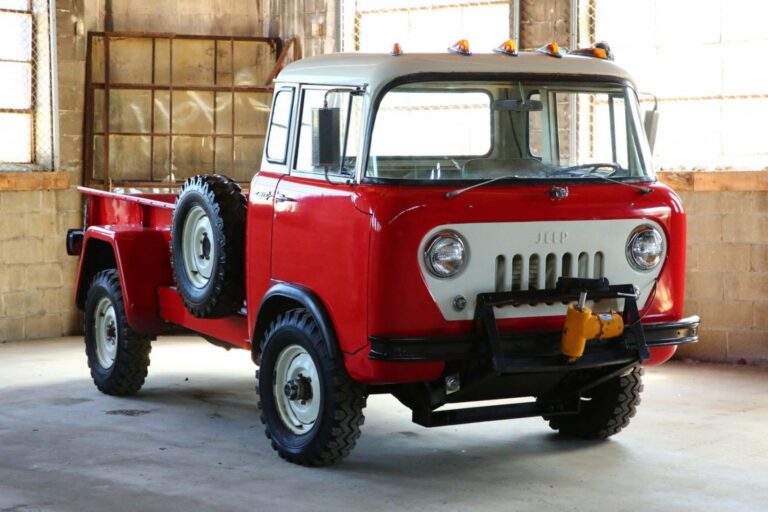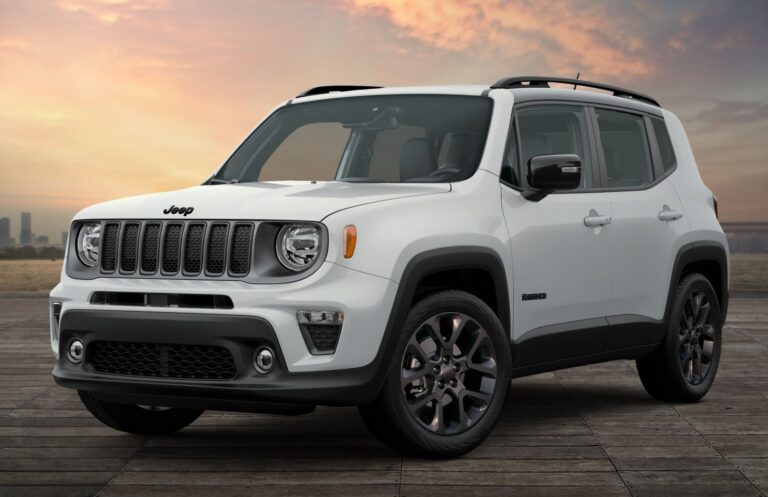1948 Jeep Willys For Sale: Your Guide to Owning an Automotive Legend
1948 Jeep Willys For Sale: Your Guide to Owning an Automotive Legend jeeps.truckstrend.com
The roar of an L-head "Go Devil" engine, the unmistakable silhouette, and the sheer rugged simplicity of its design – these are the hallmarks of the Willys Jeep, an icon born from the crucible of war and repurposed for the peacetime efforts of a nation. Among the most sought-after models for enthusiasts and collectors is the 1948 Jeep Willys, a quintessential example of the early Civilian Jeep (CJ) series. More than just a vehicle, a 1948 Willys is a tangible piece of history, a symbol of American ingenuity and perseverance. If you’re considering the thrilling prospect of a "1948 Jeep Willys For Sale," this comprehensive guide will navigate you through the journey, from understanding its legacy to the practicalities of ownership.
The Enduring Legacy: Why a 1948 Jeep Willys?
1948 Jeep Willys For Sale: Your Guide to Owning an Automotive Legend
To truly appreciate a 1948 Willys, one must understand its roots. The original Jeep, developed by Willys-Overland and Ford for military use during World War II, proved to be an indispensable tool on every front. As the war concluded, Willys-Overland saw an opportunity to transition this robust, versatile machine into civilian life, leading to the creation of the CJ (Civilian Jeep) series.
The 1948 model year primarily saw the production of the Willys CJ-2A, which had been introduced in 1945 as the first mass-produced civilian Jeep. While the CJ-3A would begin its run in 1949, the 1948 CJ-2A represents the refined culmination of Willys-Overland’s initial post-war vision. It retained much of the military Jeep’s DNA – the flat fenders, the iconic seven-slot grille, the sturdy chassis – but added civilian comforts like a tailgate, side-mounted spare tire, and a slightly larger engine bay.
These vehicles quickly became the workhorse of post-war America, found on farms, construction sites, and remote rural properties. They were, in essence, the original SUV, offering unparalleled off-road capability and utility. Today, a 1948 Willys is cherished for its historical significance, its simple mechanical design (making it relatively easy to maintain for enthusiasts), and its timeless, rugged aesthetic. Owning one isn’t just about driving; it’s about connecting with a pivotal era in automotive and American history.
What to Look For: Key Considerations When Buying a 1948 Jeep Willys
Embarking on the quest for a 1948 Jeep Willys requires a keen eye and a clear understanding of what constitutes a good buy. These vehicles are over 75 years old, and their condition can vary wildly.
- Originality vs. Restoration: Decide whether you want a highly original, unrestored "survivor" (which often commands a premium) or a fully restored vehicle. Many Willys Jeeps have been modified over the decades. A well-executed restoration can be stunning, but ensure the work was done to a high standard.
- Chassis and Frame Integrity: This is paramount. The frame is the backbone of the vehicle. Inspect it thoroughly for rust, cracks, or previous shoddy repairs. Pay attention to spring hangers, crossmembers, and body mounts. Significant frame damage can be costly, if not impossible, to repair properly.
- Engine and Drivetrain: The 1948 Willys CJ-2A typically features the 134 cu in (2.2 L) "Go Devil" L-head four-cylinder engine. Check for oil leaks (some weeping is normal for older vehicles, but excessive leaks are a red flag), smoke from the exhaust (blue for oil, white for coolant), and unusual noises. Test the T-90 three-speed manual transmission and the Dana 18 transfer case. Ensure all gears engage smoothly, and the 4WD system (high and low range) works correctly.
- Body Panels: Rust is the biggest enemy. Common rust spots include the floorboards, battery tray, tool box, rear wheel wells, and the bottom edges of the body tub and fenders. Look for Bondo or thick paint that might hide underlying corrosion. While replacement body panels are available, the cost can add up quickly.
- Electrical System: Most original Willys Jeeps were 6-volt systems. Many have been converted to 12-volt for easier starting and modern accessory compatibility. Understand which system is in place and ensure all lights, gauges, and the starter function correctly. Check the wiring for frayed insulation or amateur repairs.
- Brakes and Steering: Test the drum brakes thoroughly. Are they spongy? Does the vehicle pull to one side? Inspect brake lines for rust or leaks. For steering, check for excessive play in the steering wheel, which could indicate wear in the steering box, tie rod ends, or kingpins.
- Documentation: A clear title is essential. Any service records or history from previous owners can add significant value and peace of mind.
- Modifications: Many Willys Jeeps have received upgrades over the years, from engine swaps (e.g., to a more powerful flathead six or even a V8) to suspension lifts and modern seats. Assess if these modifications align with your goals. Some modifications, if professionally done, can enhance usability; others might detract from the vehicle’s authenticity and value.


Where to Find Your Dream Willys: Buying Channels
The hunt for a 1948 Willys is part of the adventure. Here are the most common avenues:
- Online Marketplaces: Websites like eBay Motors, Hemmings, ClassicCars.com, and Bring a Trailer are excellent starting points. Specialized forums and Facebook groups dedicated to Willys Jeeps or vintage 4x4s also frequently list vehicles for sale.
- Auctions: Major classic car auctions (e.g., Barrett-Jackson, Mecum Auctions) occasionally feature well-restored Willys Jeeps, often at the higher end of the price spectrum. Local auctions can sometimes yield barn finds.
- Specialist Dealers: There are classic car dealerships that specialize in vintage Jeeps and 4x4s. While prices might be higher, these vehicles are often thoroughly vetted and sometimes come with warranties or service records.
- Word of Mouth & Car Clubs: Joining local or national Willys Jeep clubs can be invaluable. Members often know of vehicles for sale before they hit the open market, and they can offer expert advice during your search.
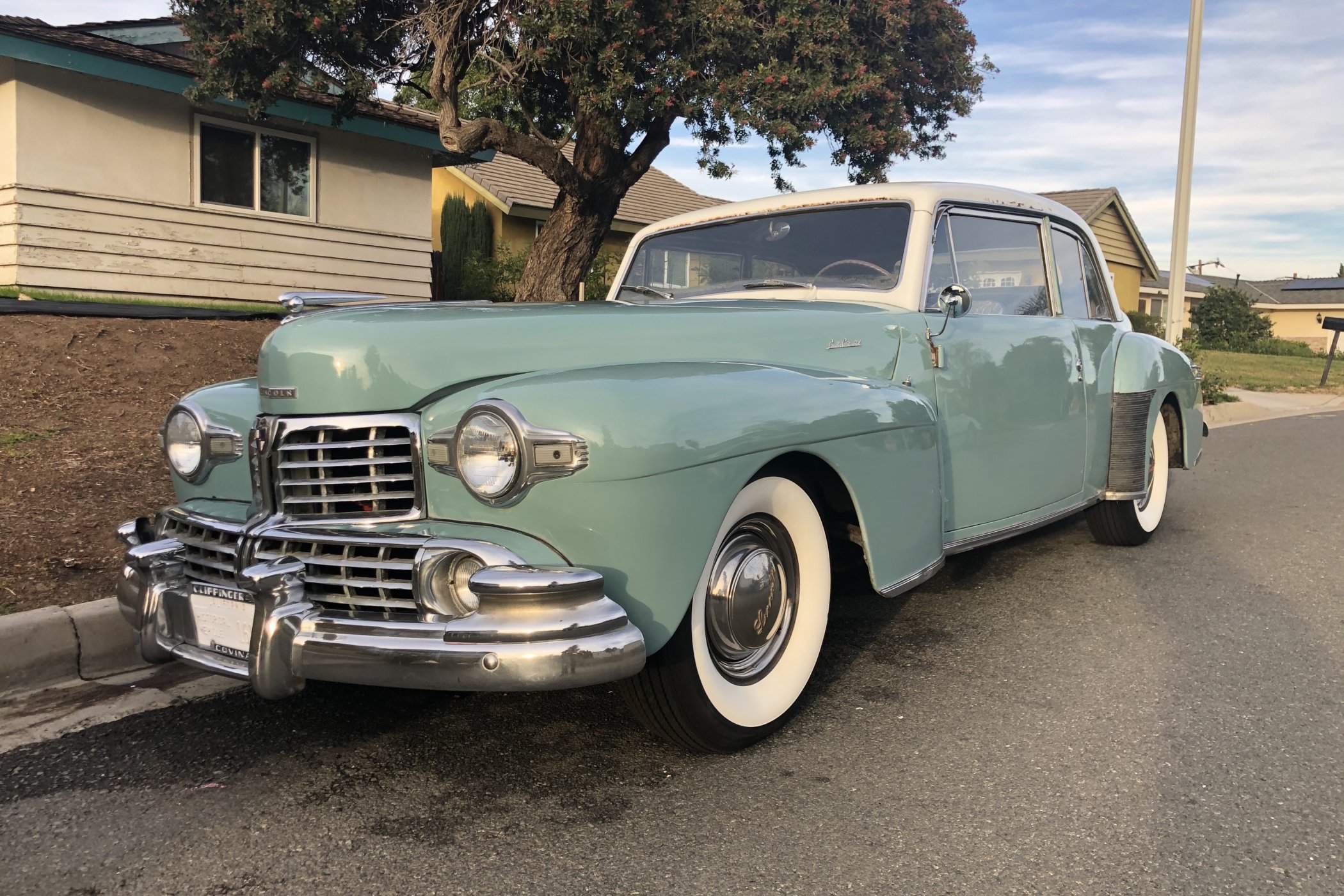
The Buying Process: Steps to a Successful Purchase
Once you’ve identified a potential candidate, follow these steps for a smooth transaction:
- Thorough Research: Before contacting a seller, research current market values for 1948 Willys Jeeps in various conditions. This will help you identify fair prices and spot over-priced listings.
- Initial Contact & Questions: Call or email the seller with specific questions about the vehicle’s history, known issues, maintenance records, and reasons for selling. Ask for detailed photos or videos, especially of common rust areas and mechanical components.
- In-Person Inspection (Crucial): Never buy a vintage vehicle sight unseen, unless you’re prepared for significant surprises. If possible, inspect the Jeep yourself. If it’s far away, consider hiring a pre-purchase inspection (PPI) service or a local classic car mechanic to evaluate it.
- Test Drive: If the vehicle is running, take it for a test drive. Pay attention to engine sounds, transmission shifting, brake feel, and steering response. Engage 4WD high and low range to ensure they work. Remember, these vehicles drive differently than modern cars – expect a rougher ride and slower acceleration.
- Negotiation: Be prepared to negotiate. Use any issues found during your inspection as leverage. Set a budget beforehand and stick to it.
- Paperwork: Ensure the seller has a clear title in their name. Get a detailed bill of sale that includes the VIN, make, model, year, sale price, and both buyer and seller signatures. Verify the VIN on the title matches the vehicle’s frame.
- Transport: Plan how you’ll get the vehicle home. For non-running or distant vehicles, professional enclosed transport is often the safest option.
Ownership & Maintenance: Living with a Vintage Willys
Owning a 1948 Willys is a rewarding experience, but it comes with unique responsibilities.
- Parts Availability: Surprisingly, parts for the "Go Devil" engine and drivetrain are quite readily available, both new and used, from specialist suppliers and online retailers. Body panels are also reproduced.
- Common Issues & Solutions:
- Rust: Ongoing battle. Prevention is key (keep it dry, wax internal panels). Address any new spots quickly.
- Electrical Gremlins (6V systems): Often due to poor grounds or old wiring. Consider a 12-volt conversion for more reliable starting and modern accessories.
- Carburetor Issues: Simple design, but can clog. Regular cleaning and proper fuel filters help.
- Oil Leaks: Expect some drips. Gaskets can harden over time. Regular fluid checks are essential.
- Maintenance Tips:
- Regular Oil Changes: Crucial for the longevity of the flathead engine.
- Grease Points: Lubricate all chassis grease points regularly.
- Fluid Checks: Monitor engine oil, transmission fluid, transfer case fluid, and differential fluids.
- Tire Pressure: Maintain correct pressure for bias-ply tires (if original).
- Winter Storage: Store in a dry, climate-controlled environment if possible. Use a fuel stabilizer.
- Community: The Willys Jeep community is incredibly active and supportive. Join online forums, local clubs, and attend events. You’ll find a wealth of knowledge, parts, and camaraderie.
- Insurance: Look into classic car insurance policies. They often offer specialized coverage, agreed-value policies, and lower premiums compared to standard auto insurance, recognizing the vehicle’s limited use.
Potential Challenges and Solutions
- Challenge: Finding a qualified mechanic.
- Solution: Many modern mechanics aren’t familiar with vintage vehicles. Seek out shops specializing in classics or learn to do much of the work yourself. The simple design of the Willys makes it an excellent vehicle for a DIY enthusiast.
- Challenge: Originality vs. Usability.
- Solution: Decide what’s important to you. If you want a show car, keep it stock. If you plan to drive it regularly, consider tasteful upgrades like a 12V conversion, seatbelt installation, or even disc brakes for safety.
- Challenge: Rust never sleeps.
- Solution: Proactive maintenance, proper storage, and addressing rust spots as soon as they appear are critical. Don’t let small issues become large ones.
1948 Jeep Willys For Sale: Estimated Price Guide
The price of a 1948 Jeep Willys can vary dramatically based on its condition, originality, and any modifications. This table provides a general range, but always factor in location and specific vehicle history.
| Condition Category | Description | Estimated Price Range (USD) | Key Factors Affecting Price |
|---|---|---|---|
| Barn Find/Project | Non-running, significant rust, missing parts, needs complete restoration. | $3,000 – $8,000 | Rust severity, completeness of parts, original engine/drivetrain, location, rarity of specific features. |
| Driver Quality | Runs and drives, roadworthy, but has cosmetic flaws, some mechanical issues, not fully restored. | $9,000 – $18,000 | Reliability of mechanicals, extent of cosmetic issues, safety features (brakes, lights), whether it needs immediate major work. |
| Nicely Restored | Fully functional, good cosmetic condition (paint, interior), minor imperfections, well-maintained. | $19,000 – $35,000 | Quality of restoration, originality of components, engine condition, tasteful upgrades (e.g., 12V conversion if done well). |
| Concours/Show Quality | Meticulously restored to original specifications or better, pristine condition, show-winning potential. | $36,000 – $60,000+ | Authenticity, attention to detail in restoration, provenance, professional restoration shop, historical significance. |
| Modified/Restomod | Running, but with significant non-original upgrades (e.g., engine swap, modern suspension, power steering). | $15,000 – $45,000+ | Quality of modifications, type of engine/drivetrain, professional installation, overall condition and usability. |
Note: These are estimated ranges as of late 2023/early 2024 and can fluctuate significantly based on specific vehicle history, location, market demand, and unique features.
Frequently Asked Questions (FAQ) about 1948 Jeep Willys For Sale
-
Q: Is a 1948 Willys a good daily driver?
- A: Generally, no. While incredibly robust, they lack modern comforts, safety features, and highway speeds. They are best suited for recreational use, short trips, or as a weekend cruiser. A heavily modified "restomod" could be a daily driver, but it loses much of its original character.
-
Q: Are parts hard to find for a 1948 Willys?
- A: Surprisingly, no. Due to their popularity and simple design, many mechanical parts for the "Go Devil" engine and common drivetrain components are still reproduced or available from specialist suppliers. Body panels are also widely available.
-
Q: What’s the main difference between a CJ-2A and a CJ-3A?
- A: The CJ-2A was produced from 1945-1949. The CJ-3A, introduced in 1949, featured a one-piece windshield (replacing the two-piece split windshield of the CJ-2A), a slightly updated dashboard, and minor engineering changes. A 1948 model will almost certainly be a CJ-2A.
-
Q: How much horsepower does a 1948 Willys have?
- A: The 134 cu in "Go Devil" L-head four-cylinder engine typically produced around 60 horsepower. This is ample for its intended utility but means highway speeds are limited.
-
Q: Can I convert my 1948 Willys to a 12-volt electrical system?
- A: Yes, it’s a very common and recommended modification. It provides more reliable starting, brighter lights, and allows for the use of modern accessories like USB chargers or a radio. Kits are available for a straightforward conversion.
-
Q: What’s the top speed of a 1948 Willys?
- A: A stock 1948 Willys CJ-2A typically has a top speed of around 45-55 mph, depending on gearing, tire size, and engine condition. They are not built for speed.
-
Q: Is a 1948 Willys a good investment?
- A: For well-maintained, original, or professionally restored examples, values have shown a steady appreciation over time. As an iconic piece of automotive history, their appeal remains strong, making them a potentially stable investment for enthusiasts.
Conclusion
The allure of a "1948 Jeep Willys For Sale" is undeniable. It’s an opportunity to own a piece of American history, a rugged machine that played a pivotal role in shaping post-war society. While purchasing and maintaining such a vintage vehicle requires research, patience, and a willingness to embrace its quirks, the rewards are immense. From the joy of driving a true classic to the camaraderie of the Willys community, the journey of owning a 1948 Willys is an adventure in itself. Approach the search with knowledge, inspect with diligence, and soon you could be behind the wheel of your very own automotive legend, ready to create new stories on and off the beaten path.
